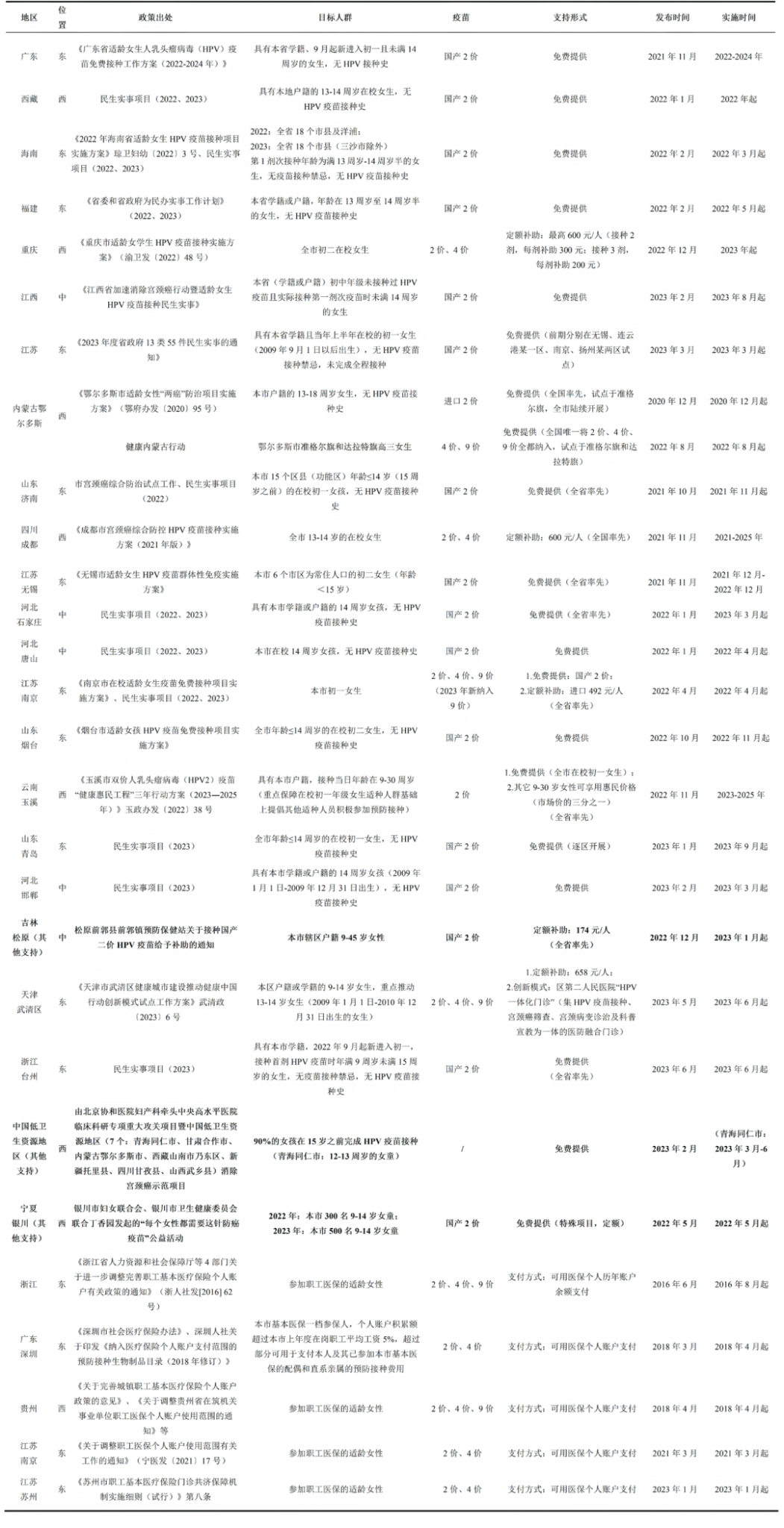Awareness and Willingness for RV Vaccination Among Parents in China
There are limited number of cross-sectional studies in China on the awareness, uptake willingness, and willingness-to-pay for RV vaccines. However, existing research has found that the awareness of RV vaccines among Chinese parents ranges from 37.8% to 55.05%, 1–4 and is related to factors such as education level, place of residence, number of children, and monthly household income per capita.
1) Awareness of RV Vaccines and Main Sources of Vaccine Information
A study conducted by Peking Union Medical College Hospital found that parents with higher education levels have a higher awareness rate of RV vaccines. Parents with higher education levels have stronger learning and comprehension abilities, and they actively seek health-related knowledge, including childhood immunization. Additionally, their higher education level may increase the access to health information, leading to a higher awareness rate of the pentavalent RV vaccine.1
Research from the Changchun Center for Disease Control and Prevention indicates that vaccination units are the primary source of vaccine-related information for caregivers, followed by healthcare professionals, relatives, friends, and internet, television, radio, and print media.2 Similar conclusions were drawn by the Songjiang District Center for Disease Control and Prevention in Shanghai.3 Even though the information provided by professionals is accurate and reliable, it is still worth disseminating vaccine knowledge through online and broadcast/television channels in an engaging, readable, and user-friendly manner, such as through official WeChat accounts of CDC or leading media. Given the broad reach and large follower base of the internet and media, these channels can serve as effective supplementary methods for vaccine promotion through providing reliable and solid content.
2) Willingness to Take RV vaccine
Existing research shows that approximately 80% of parents in China are willing to vaccinate their children with the pentavalent RV vaccine (RotaTeq).2,3 The results indicate that parents who have heard of RV, believe prevention is more important than treatment, consider vaccination the most important means of disease prevention, believe in the efficacy of vaccines, and support the domestic promotion of RV vaccines are more willing to vaccinate their children. Research from a first-tier city in China shows that parents unwilling to vaccinate their children are primarily concerned about vaccine safety and distrust newly launched vaccines.2 Additionally, many parents believe that the cost of RV vaccination should not be borne solely by individuals. If the vaccine is included in the national immunization program, it could significantly increase parents’ willingness to vaccinate their children RotaTeq.
The willingness of parents in a coastal city in eastern China to vaccinate their children with the RV vaccine is on par with the willingness rate for other non-National Immunization Program (NIP) vaccines in the province.5,6 The study shows that “protecting children from illness” is the primary reason for the RV vaccination. Furthermore, research finds that recommendations from vaccination clinic doctors are more effective than online vaccination campaign, indicating that the promotion by immunization program staff is more reliable and more readily accepted by the public. In rural areas, where living conditions are relatively poorer than in urban areas, parents are more willing to vaccinate their children if they are physically weaker. The findings of Xiuli Wang et al. further confirm the importance of strengthening health education and knowledge dissemination to raise vaccine awareness.7
Research from Changchun shows that after extensive promotion of the RV vaccine and the implementation of a vaccination notification system, the vaccination rate for RV increased significantly.2 Therefore, it is recommended that immunization clinic staff dedicate the efforts in health communication about VPD risk while deliver the immunization services. Their proactive promotion of vaccination-related policies and measures will enhance public understanding and awareness of vaccine safety and efficacy, and increase trust in vaccination.
Main Factors Influencing Willingness and Behavior of RV Vaccination
RV vaccination is influenced by the awareness of the vaccine, parents’ understanding of vaccine-preventable diseases and the vaccine, vaccine safety and efficacy, parents’ socioeconomic status, and the recommendation of healthcare professionals. At the individual level, factors such as vaccine-related knowledge, perception of vaccine efficacy and safety, and higher willingness to uptake the vaccine are positive factors. At the sociocultural level, communication among friends, relatives, and neighbors can significantly influence individual attitudes and behaviors by shaping risk perception or fostering interpersonal trust. Families with friends or relatives who oppose vaccination have a lower willingness to vaccinate. At the healthcare system level, strengthening health education and knowledge dissemination, improving public understanding and awareness of vaccines, and increasing trust in vaccine to prevent the diseases are important factors in promoting vaccination.
1) Susceptibility and Severity of Disease
Perceived susceptibility reflects parents’ perception of the likelihood of their child infecting a disease. This includes the child’s age (children of certain age groups are more susceptible to specific diseases), medical history (previous experiences of other children in the family being ill), immune status (the child’s immunity level), and living environment (e.g., poor sanitary conditions may increase the risk of disease infection). These factors influence parents’ decision making of taking the non-NIP vaccines.7 Research shows that if parents perceive the clinical consequences of a disease as severe (e.g., physical harm to the child, high medical and care costs, psychological burden, and impact on the child’s education and social participation), they are more willing to vaccinate their children. Particularly, mothers are unwilling to bear the psychological burden of their child falling ill, which strengthens their vaccination intention.
2) Vaccine Efficacy and Safety
Multiple studies indicate that vaccine safety and efficacy are usually the primary factors parents consider when deciding whether to vaccinate. A study conducted in the Netherlands surveyed 1,250 parents of newborns about their preferences for RV vaccination and used a discrete choice experiment (DCE) to determine the relative importance of different vaccine and implementation characteristics. The study found that parents prefer vaccines with high efficacy, low frequency of severe side effects (i.e., 1 in 1 million), and long-lasting protection.8 Research in China also found that the risk of minor side effects is the most important factor influencing the vaccination choice, while the time required for vaccination is the least important factor.9 When the risk of minor side effects decreased from 1/10 to 1/50, the vaccination rate increased the most (74.45%). When making the vaccination decision, parents prefer RV vaccines with lower risks of minor side effects, higher efficacy, longer protection duration, a vaccination time of 2 hours, and lower costs.
3) Decision Influencers
Both domestic and international studies indicate that friends or relatives influence parents’ decisions on whether to vaccinate with the RV vaccine. A study conducted in Italy found that living in central Italy and having friends/relatives who oppose vaccination are significantly associated with a lower likelihood of vaccination, while parents’ education level and the child’s basic information were not associated with the vaccination outcomes.10 Domestic research found that communication among friends, relatives, and neighbors can significantly influence individual attitudes and risk mitigation behaviors by affecting risk perception or fostering interpersonal trust.7 Parents in rural settings, due to their relatively poorer understanding of non-NIP vaccines, tend to seek social relationships and inquire about the vaccination status of other children. The non-NIP vaccination status of other children in the village can not only change parents’ vaccination intentions but also strengthen and shape these intentions.7
4) Attitudes of Healthcare Professionals
Research indicates that healthcare providers’ understanding of RV disease, confidence in vaccine efficacy, and recommendations from health institutions can positively promote vaccination rates.11 Research in China also confirms that healthcare professionals’ recommendations are an important factor influencing non-NIP vaccination. A cross-sectional study conducted in 148 community health centers across ten provincial-level administrative regions in China used a multi-stage sampling method and recruited 627 public health workers. Among the 610 healthcare providers included in the study, 54.1% had recommended the RV vaccine.12
5) Vaccine Policies Emphasize Vaccine Value
NIP vaccines may influence parents’ choice of non-NIP vaccines, especially when NIP vaccines can partially prevent diseases covered by non-NIP combination vaccines (e.g., DTP and pentavalent vaccines). In such cases, parents may be less willing to pay for non-NIP combination vaccines. Additionally, some parents believe that vaccines not included in the NIP are considered unimportant by the government and may be unnecessary, making them not take any non-NIP vaccines.7
Content Editor: Menglu Jiang, Ziqi Liu
Page Editor: Ziqi Liu
References
- Wang, M., Sun, J., Yang, F., Guo, H., & Dong, X. Awareness rate and influencing factors of knowledge about pentavalent rotavirus vaccine among parents of newborns. Journal of Medical Pest Control 36, 1157–1160 (2020).
- Tao, Y., Zheng, T., & Tao, Y. Analysis of the vaccination rate and awareness of live oral rotavirus vaccine before and after the implementation of the vaccination notification system in Changchun. Chinese Journal of Biologicals 33, 845–848 (2020).
- Hu, T. et al. Investigation on parents’ awareness of rotavirus and pentavalent oral rotavirus vaccine and their willingness to vaccinate in Songjiang District, Shanghai. Chinese Journal of Viral Diseases 9, 371–376 (2019).
- Zhang, S., Yao, X., & Lu, Z. (2021). Investigation on the willingness of parents of children under 3 years old to vaccinate with oral rotavirus vaccine in Yancheng City. Jiangsu Journal of Preventive Medicine (032-001).
- Ling, L., Sun, X., Lü, X., Zhen, X., & Zhou, M. Investigation on the willingness of parents of children aged 0–5 years to vaccinate with varicella vaccine in Changzhou. Modern Preventive Medicine 46, 151–153 (2019).
- Zhang, Z. et al. Investigation on parents’ awareness of hand, foot, and mouth disease and their willingness to vaccinate with EV71 vaccine in Nanjing. Modern Preventive Medicine 45, 3998–4000 (2018).
- Wang, X., Fan, Y. & Wang, W. Investigation of non-National Immunization Program vaccination intentions in rural areas of China. BMC Public Health 23, 1485 (2023).
- Veldwijk, J., Lambooij, M. S., Bruijning-Verhagen, P. C. J., Smit, H. A. & Wit, G. A. D. Parental preferences for rotavirus vaccination in young children: A discrete choice experiment. Vaccine 32, 6277–6283 (2014).
- Ma, W. et al. Parental preferences for rotavirus vaccination for their children under 5 years old in China: A discrete choice experiment. Human Vaccines & Immunotherapeutics 19, 2179222 (2023).
- La Fauci, G. et al. Rates and determinants of rotavirus vaccine uptake among children in Italy: a cross-sectional study within the 2022 OBVIOUS* project. BMC Public Health 24, 770 (2024).
- Apte, A., Roy, S., Bavdekar, A., Juvekar, S. & Hirve, S. Facilitators and barriers for use of rotavirus vaccine amongst various stakeholders and its implications for Indian context – A systematic review. Hum Vaccin Immunother 14, 2760–2767 (2018).
- Lyu, Y., Lai, X., Ma, Y. & Fang, H. Factors associated with recommendation behaviors of four non-National Immunization Program vaccines: a cross-sectional survey among public health workers in China. Infect Dis Poverty 12, 91 (2023).





